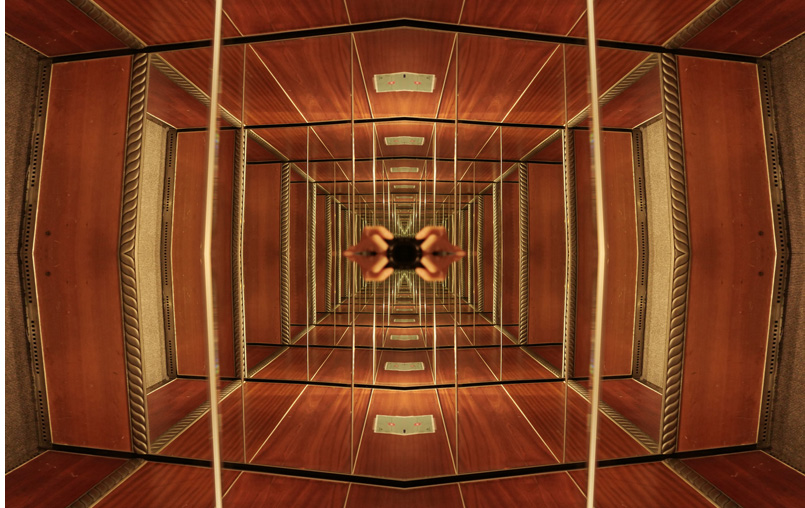
Indra's Net
“I think I can safely say that nobody understands quantum mechanics.” - Richard Feynman
Quantum mechanics is a fundamental theory in physics that provides a mathematical description of the physical properties of nature at the scale of atoms and subatomic particles. An interpretation of quantum mechanics is an attempt to explain how the theory corresponds to reality, ie how to understand it.
Although quantum mechanics has held up to rigorous and extremely precise tests in an extraordinarily broad range of experiments - not one prediction from quantum mechanics has been contradicted by experiments - there are many contending schools of thought over its interpretation. These views on interpretation differ on such fundamental questions as whether quantum mechanics is deterministic or is described by a random probability distribution, which elements of quantum mechanics can be considered real, and what the nature of measurement is, among others. That and the old wave-particle conundrum.Despite nearly a century of debate and experiment, no consensus has been reached among physicists and philosophers of physics concerning which interpretation best represents reality. One school of thought can be summed up as, "Shut up and calculate!", meaning that we should use the theory without trying to interpret what it means. Wikipedia lists 15 main interpretations and there are others.
This article describes a plausible interpretation of quantum phenomena introduced by the physicist, Carlo Rovelli, in 1994.
In the heavenly abode of the great god Indra, there is a wonderful net that stretches out infinitely in all directions. There is a single glittering jewel in each eye of the net. Each one of these jewels reflects all the other jewels in the net, infinite in number. Not only that, but each of the jewels reflected in this one jewel is also reflecting all the other jewels, so that there is an infinite reflecting process occurring. Buddhism uses this image to describe the interconnectedness of all phenomena.
Rovelli, uses an idea similar to Indra's net to explain quantum mechanical phenomena. The section below is a compressed version of the explanation by Peter Evans.
Rovelli believes that we should abandon the notion of quantum mechanical objects and instead talk only about properties in relation to observers or interacting systems.
During the scientific revolution, Isaac Newton and his German counterpart, Gottfried Leibniz, disagreed on the nature of space and time.
Newton claimed space and time acted like a container for the contents of the universe. That is, if we could remove the contents of the universe – all the planets, stars, and galaxies – we would be left with empty space and time. This is the absolute view of space and time.
Leibniz, on the other hand, claimed that space and time were nothing more than the sum total of distances and durations between all the objects and events of the world. If we removed the contents of the universe, we would remove space and time also. In this relational view space and time are only the spatial and temporal relations between objects and events. The relational view of space and time was a key inspiration for Einstein when he developed General Relativity.
Rovelli makes use of this idea to understand quantum mechanics. He claims the objects of quantum theory, such as a photon, electron, or other fundamental particle, are nothing more than the properties they exhibit when interacting with – in relation to – other objects.
These properties of a quantum object are determined through experiment, and include things like the object’s position, momentum, and energy. Together they make up an object’s state.
According to Rovelli’s relational interpretation, these properties are all there is to the object: there is no underlying individual substance that has the properties.
Consider the classic quantum puzzle of Schrödinger’s cat. We put a cat in a box with a vial of poison gas triggered by a quantum process (like the decay of a radioactive atom), and we close the lid.
The quantum process is a chance event. There is no way to predict it, but we can describe it in a way that tells us the different chances of the atom decaying or not in some period of time. Because the decay will trigger the opening of the vial of poison gas and hence the death of the cat, the cat’s life or death is also a purely chance event.
According to orthodox quantum theory, the cat is neither dead nor alive until we open the box and observe the system. A puzzle remains concerning what it would be like for the cat, to be neither dead nor alive.
But according to the relational interpretation, the state of any system is always in relation to some other system. So the quantum process in the box has an indefinite outcome in relation to us, but has a definite outcome for the cat.
So it is perfectly reasonable for the cat to be neither dead nor alive for us, and at the same time to be definitely dead or alive itself. One fact of the matter is real for us, and one fact of the matter is real for the cat. When we open the box, the state of the cat becomes definite for us, but the cat was never in an indefinite state for itself.

In the relational interpretation there is no global, “God’s eye” view of reality. This tallies with my conclusion from the falling stone paradox, which shows that if you drop a stone inside a moving train then the stone does not follow a unique path. The shape of the path it follows depends on the observer. I like Rovelli's interpretation because it also ties in well with relativity theory. Special Relativity tells us that even time, length and simultaneity are not absolute but depend on one's frame of reference. Rovelli takes this a step further by stating that objects themselves only exist in relation to other objects.
My article on things concludes that individual things are not actually separate from their surroundings in any objective sense. That only the action of our minds separates an entity from its environment. It is the mental process of separation that creates things. So all physical 'things' are actually non-distinct, not separate, not bounded, not apart, undivided, not independent, not individual. This is not to say that the world is illusion, or that it is the creation of thought. It means that separate entities only exist as objects of thought. The real world is out there regardless of what we think or believe. However, its break-up into "things" is a fragmentation created by our minds. Rovelli uses this insight to interpret the quantum world, and beyond.
Rovelli argues that, since our world is ultimately quantum, we should heed these lessons. In his view, the world is an intricate web of interrelations, such that objects do not have their own individual existence independent from other objects. There are no properties outside of interactions. Reality is an endless hall of quantum mirrors. Moreover, there may well be no independent metaphysical substance constituting our reality that underlies this web.
This can be extended to the notion of the self. Whitehead's answer to, "What am I?" would be, "No-one and nothing, just the illusion of continuity with past experience." Illusion because there is no entity from my past whose continued, unchanging existence links my present experience with that of a minute ago. There is no enduring self that has my experiences. Whitehead: "My present experience is what I now am." William James has argued that experience is the sole reality and that consciousness is an unnecessary additional construct. Consciousness itself cannot be detected.
Schrödinger: "The world is given to me only once, not one existing and one perceived. Subject and object are only one."
As Rovelli puts it: “We are nothing but images of images. Reality, including ourselves, is nothing but a thin and fragile veil, beyond which… there is nothing.”